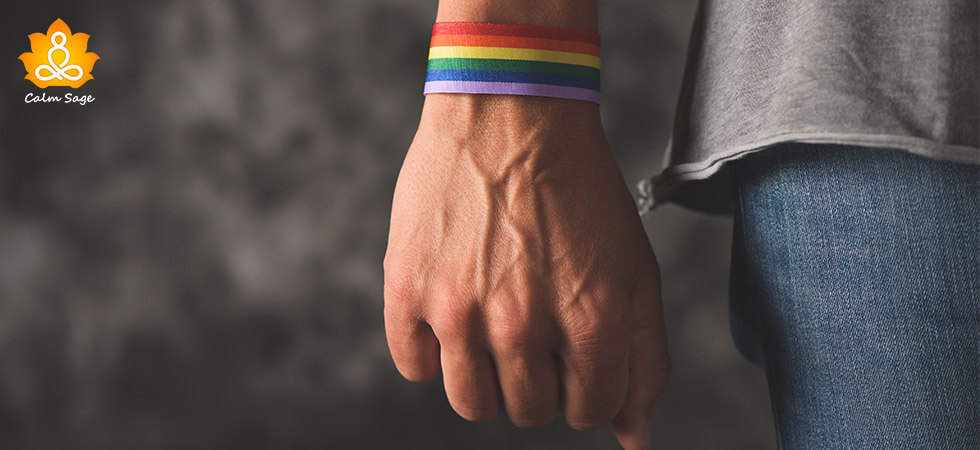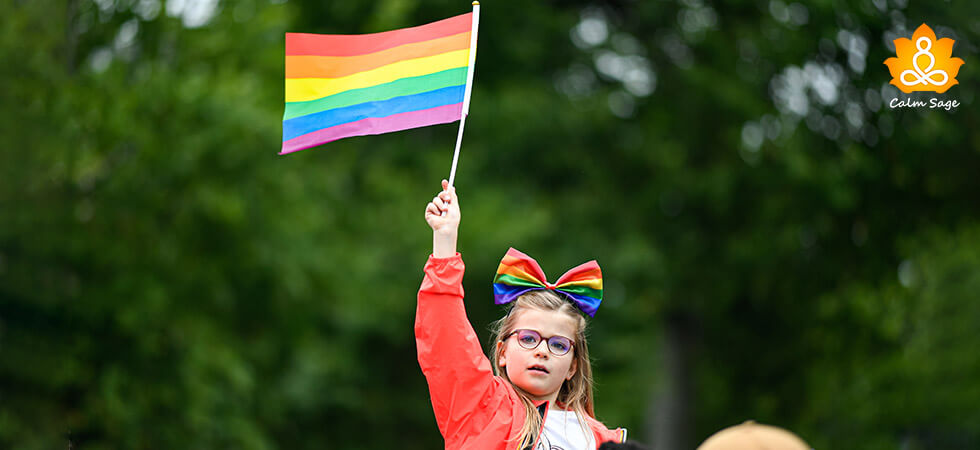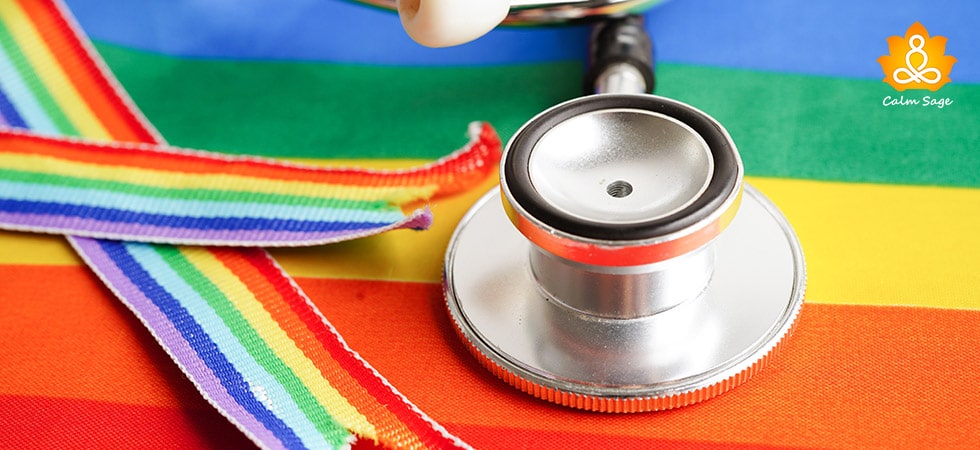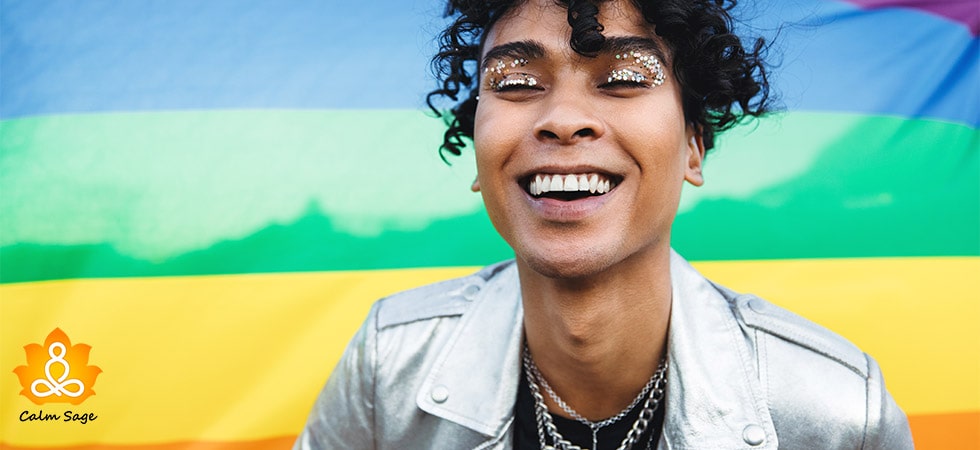‘Living In The Closet’: What It Really Means For LGBTQIA+ Mental Health

“It’s okay. It may not seem like it right now, but you are going to be fine.” – Connor Franta
All I needed to hear this to understand it’s OK to accept that I’m different from everyone else. June is here and with June we welcome Pride Month! While this month can be an open celebration for many LGBTQ+ members, for some, it can be a quiet celebratory month.
With so much focusing on coming out, we nearly forget to emphasize what it means to be in the closet. Being in the closet isn’t a new concept but it is still unfamiliar to many.
As important as it is to understand what living in the closet means, it’s important to understand how it impacts the mental and emotional state of someone firmly in the closet.
Understanding what it means to be in the closet, the risks associated with coming out of the closet, and how being in the closet can affect your mental health can help you or your closeted loved one to find the support they need.
What Does “In The Closet” Mean?
In the real world, a closet is where you keep your personal belongings and is extremely private to you. So when we talk about being “in the closet”, it can literally mean living or hiding in a small space where no one else is privy to your physical space and by extension, your thoughts.
In the context of the LGBTQIA+ community, when we talk about living or hiding in the closet, it means that one hasn’t come out or accepted their sexuality or identity publicly. A person keeping their gender identity, sexuality, or both a secret from the outside world can be considered one living in the closet.
Closeted individuals may choose to come out to their loved ones or close friends or family, or even their partners, however, they may not choose to come out or disclose their identity or sexual orientation to others – strangers, coworkers, or even certain family members.
Coming Out Of The Closet: The Risks
Many countries in the world still are not accepting of the LGBTQIA+ community and in some progressive countries, having a same-sex relationship is considered a crime. When someone’s gender identity or sexual orientation is not accepted by people around them, they may choose to stay firmly in the closet to protect themselves and their well-being.
The risks that can be associated with coming out of the closet for many of the LGBTQIA+ community can include:
1. The Lack Of Safety
You can stay in the closet because you may fear your safety. Even though we’ve come a long way in getting the rainbow community together and accepted, there are still people who are unaccepting and may resort to physical violence to protest against people of the LGBTQIA+ community.
2. The Lack Of Acceptance
Our family members including our parents, siblings, aunts, and uncles may accept us as a part of the diverse rainbow community, but there are still family members, friends, and coworkers who may not. Especially in conservative families, the lack of acceptance can be one risk associated with coming out of the closet.
3. Public Discrimination
It’s not wrong to stay in the closet or to come out of the closet but when someone chooses to come out of the closet, there is a high risk that they may face public discrimination, especially in the workplace. Did you know that the people of the LGBTQIA+ community are more likely to face discrimination in the workplace than heterosexuals? They even earn less than their counterparts.
4. The Lack Of Healthcare Access
Even with the progress made in the healthcare sector to help and support the LGBTQIA+ community, there is still a continuous lack of healthcare access for the LGBTQIA+ community. And even there, the risk of being rejected over their sexuality or identity is always present, making people hide in than come out of the closet.
When You Are Not “Out”?
We’re humans, the same as others, who breathe the same air and eat the same food but even then some people are discriminated against for their individuality and uniqueness. People living in the closet don’t have to worry about the above-mentioned risks. As long as they can hide their true identity and orientation from others, they are less likely to encounter these risks. When no one knows who you are, they won’t treat you otherwise.
However, this does not mean that their life satisfaction and quality of life are increased when they’re living in the closet.
Living as a closeted individual or hiding in the closet means you’re hiding your true self and are unable to accept who you truly are – to yourself and others. This thinking can lead to stress and can make you avoid getting close to others, fear rejection, and being discriminated against.
Many people of the rainbow community living in the closet may also struggle with dating as many people believe that a closeted individual is inauthentic and complicated.
Closeted individuals are also likely to hide their pride in belonging to the LGBTQIA+ community and may avoid all activities that encourage the pride community’s togetherness.
The Toll “Living In The Closet” Can Take On Your Mental Health
Living in the closet and coming out of the closet have their own sets of challenges and benefits but more often than not, it all depends on the individual’s support system and the environment they choose to live in.
The mental health impact of living in the closet or coming out is not all conditional on the environment either.
In a study, it was found that disclosing one’s identity and orientation to others, in certain situations, didn’t affect the mental health of a person. Living in the closet or coming out of the closet was neither harmful nor helpful.
The most important factor here is the support system one has. Having a strong and healthy support system is likely to promote the mental health of the individual as they come out of the closet. In another research, it was found that openly lesbians, gays, and bisexuals showed low-stress hormone levels and had less anxiety, depression, and burnout symptoms.
Coming out of the closet is your choice and no one can take that choice away from you. Every coming out experience is different and remember, you don’t have to come out if you’re not ready.
If you feel unsafe or threatened when coming out of the closet, you can connect with LGBTQIA+ friendly resources for help and support. If you’re worried about your coming out journey and don’t know where to begin or how to accept yourself, you can always reach out to a professional counselor for help.
Resources To Help Our LGBTQIA+ Community
- GLMA Health Professionals Advancing LGBT Equality
- Gay, Lesbian & Straight Education Network (GSLEN): Student Action
- Crisis Text Line: Text at 741-741
- The Trevor Project: Call 1-866-488-7386 or text START at 678-678
- Trans Lifeline: Call 1-877-565-8860
- National Suicide Prevention Lifeline: Call 1-800-273-8255
- LGBT National Hotline: Call 1-800-843-4564
I hope this blog was helpful. Your coworker, your friend, your family member, or the stranger sitting next to you on the bus can be a part of the LGBTQIA+ community so be respectful of their wishes.
If your loved one has come out to you and not others then make sure you respect their choice and let them come out of the closet at their pace. When they do come out of the closet, support them and cheer for them!
Living in the closet can be challenging and can take a toll on one’s mental health but it can also protect them from hate crimes, violence, and discrimination. Whether an individual chooses to come out of the closet or live in the closet is their choice so be respectful, always.
For more, you can connect with us at info@calmsage.com or DM us on social media. You can also share your thoughts with me in the comments section below!
Happy Pride!
Take care and stay safe!




















